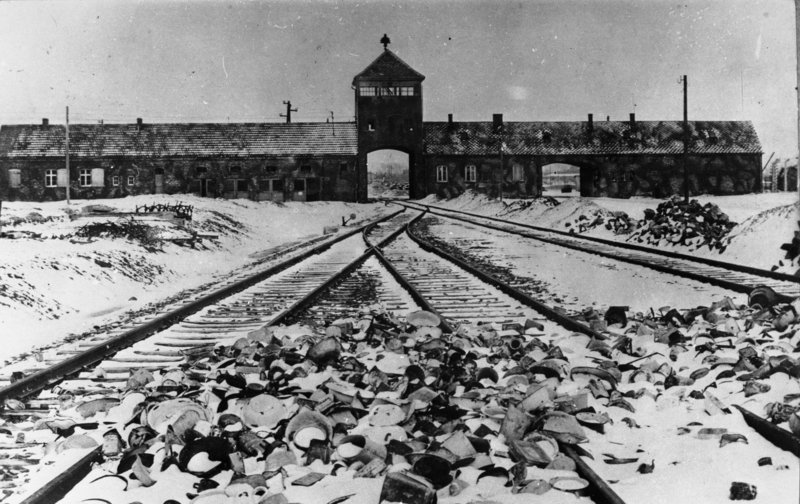Auschwitz 13917 – Mirjam Blits
Auschwitz is one of the most notorious concentration camps in the world, and it was the site of some of the worst atrocities committed during the Holocaust. The camp was located in the town of Oswiecim in Poland, and it was established by the Nazis in 1940. Over the course of the war, more than 1.1 million people were killed at Auschwitz, including Jews, Roma, homosexuals, and political dissidents. One of the survivors of Auschwitz was Mirjam Blits, who lived to tell her story of survival and resilience.
Early Life
Mirjam Blits was born in Amsterdam in 1926, and she grew up in a Jewish family. Her parents owned a diamond-cutting business, and they were relatively well-off. Mirjam was an only child, and she was very close to her parents. She attended a Jewish school in Amsterdam, and she was a bright and curious student.
The Nazi Occupation of the Netherlands
In May 1940, the Nazis invaded the Netherlands, and they quickly established a puppet government. The occupation was brutal, and the Nazis began to implement a series of anti-Jewish measures. Jews were forced to wear yellow stars, and they were banned from certain professions and public spaces. Mirjam’s family was deeply affected by these restrictions, and they were forced to sell their business and move to a smaller apartment.
Deportation to Westerbork
In 1942, Mirjam and her family were deported to the transit camp of Westerbork in the Netherlands. This was the first step in their journey to Auschwitz. The conditions at Westerbork were terrible, and the family was forced to live in cramped and unsanitary conditions. They were also subjected to daily roll calls, and they were forced to perform hard labor.
Arrival at Auschwitz
In 1943, Mirjam and her family were transported to Auschwitz. The journey was long and arduous, and many people died along the way. When they arrived at the camp, they were separated from each other, and Mirjam never saw her parents again. She was stripped of her clothes and belongings, and she was given a number – 13917 – which would become her identity for the next two years.
Life in Auschwitz
Life in Auschwitz was a constant struggle for survival. Mirjam was forced to perform hard labor, and she was subjected to brutal beatings and punishments. She was also forced to witness the deaths of many of her fellow prisoners, either through disease, starvation, or murder. However, Mirjam was determined to survive, and she formed close bonds with some of the other women in her barrack. They supported each other through the darkest times, and they gave each other hope for a better future.
Liberation and Aftermath
Mirjam was liberated from Auschwitz by the Soviet army in January 1945. She was weak and malnourished, but she was alive. She was eventually reunited with some of her surviving family members, and she began to rebuild her life. She moved to Israel in 1948, where she met her husband and started a family. She also became involved in Holocaust education and remembrance, and she shared her story with countless people around the world.
Conclusion
Mirjam Blits is a survivor of one of the darkest chapters in human history. Her story is a testament to the resilience of the human spirit, and it serves as a reminder of the importance of remembrance and education. We must never forget the atrocities committed at Auschwitz and other concentration camps, and we must work to ensure that such horrors never happen again.
FAQs
1. What was Auschwitz?
Auschwitz was a concentration camp established by the Nazis in 1940. It was located in the town of Oswiecim in Poland, and it became the site of some of the worst atrocities committed during the Holocaust.
2. Who was Mirjam Blits?
Mirjam Blits was a survivor of Auschwitz who was born in Amsterdam in 1926. She lived through the Nazi occupation of the Netherlands and was eventually deported to Auschwitz with her family.
3. How did Mirjam survive Auschwitz?
Mirjam survived Auschwitz through sheer determination and the support of her fellow prisoners. She was forced to perform hard labor and was subjected to brutal beatings and punishments, but she never lost hope.
4. What happened to Mirjam after she was liberated from Auschwitz?
Mirjam eventually moved to Israel, where she met her husband and started a family. She also became involved in Holocaust education and remembrance.
5. Why is it important to remember the Holocaust?
It is important to remember the Holocaust to honor the memory of those who were killed, to educate future generations about the dangers of hatred and intolerance, and to ensure that such atrocities never happen again.
